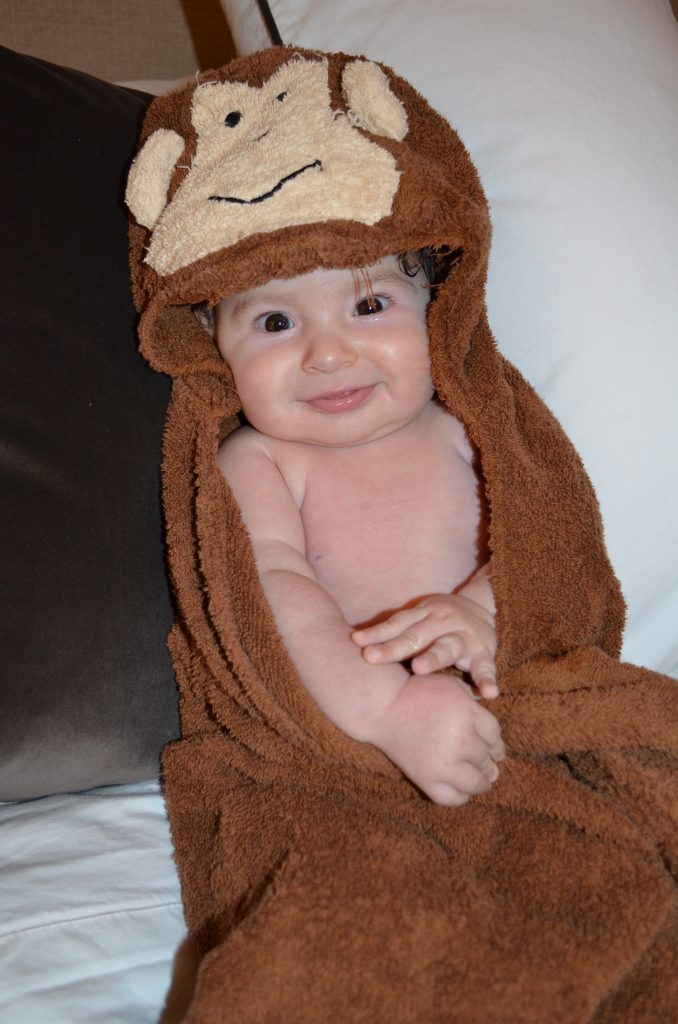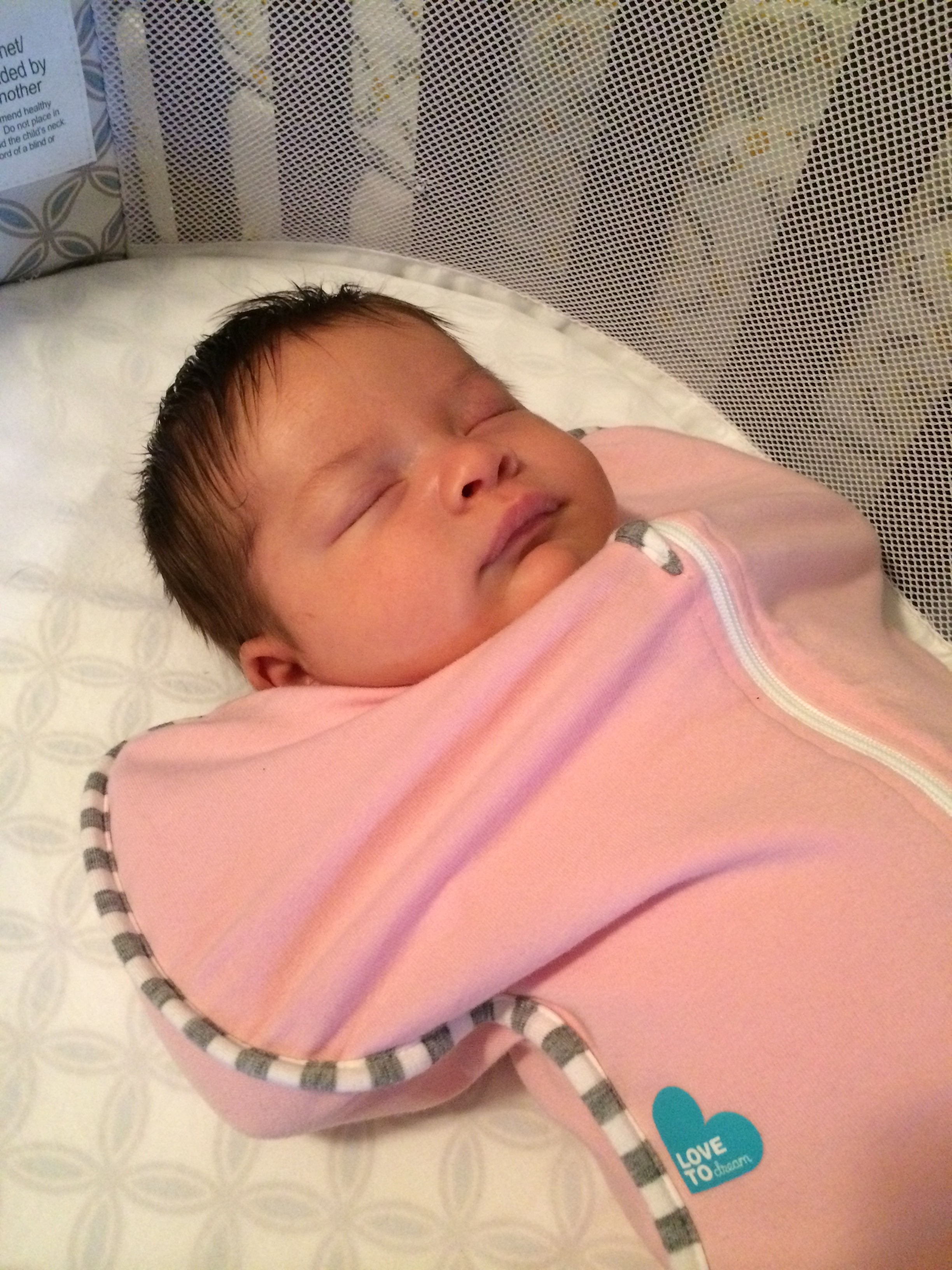
If there is one thing that seems to be impossible to get a handle on as a parent, it’s sleep! After having your baby, you wonder if you will ever get to sleep again, you wonder if your baby will ever sleep through the night, when you can train them to sleep through the night, what time you should be putting them to bed, when should you move them to a bed from a crib… then you move your baby to a bed and a whole new set of issues arise — it’s never ending! It gave me some piece of mind knowing that we all struggle with sleep, even Pampers Dad, Olympian Mark Oldershaw, and his wife, Annamay Pierse.
If you’re anything like me, you train yourself to work on little to no sleep and carry on! I sat down with Alanna McGinn, founder and senior sleep consultant of goodnight sleepsite. I asked her a few questions about infant and toddler sleep. I hope you find it as helpful as I did!
Question: When should you get your baby on a sleep routine?
At goodnight sleepsite, Alanna and her team start working with babies at 4-1/2 months. Around this age, you can start paying attention to the clock as sleep patterns are beginning to develop and sleep rhythms begin to form. Many parents start sleep training too early. It is biologically difficult to get babies on a routine before 4-months-old because a baby isn’t able to sleep through the night before then. According to Alanna, you really shouldn’t start seep training before 4-1/2 months. With that said, you can start a sleep routine right from day one.
Read Alanna’s sleep tips for travelling on Jenna G Maternity.
Question: What does a good bedtime routine look like?
First and foremost, it is important to have a consistent bedtime routine. However you do it is up to you, but make sure it’s the same every night. Children thrive when they know what to expect! A bedtime routine that includes a bath, bottle or breast, a book and/or songs is enjoyable and relaxing for your child. A bedtime routine such as this one can be started as early as when baby is 1-month-old. This helps cue them that it is time for bed.
Alanna explained that it is also important to have a conducive sleep environment. Work on a conducive sleep environment where is your baby alone, in the crib on her back, in a dark room that is either quiet or has a white noise machine, and make sure to keep the temperature cool. As a sleep professional, Alanna advocates ‘best sleep practices’ for babies, which is in their crib on their back alone. If you co-sleep, which is room sharing or bed sharing, ensure that your room is conducive for sleep as well.
For a toddler, begin your bedtime routine 30-minutes before it is time for sleep. Goodnight sleepsite has started the #Bring Back Bedtime Initiative, which encourages parents to connect with their children before bedtime. Take away the technology and read a book, talk to your child about their favorite part of the day or what they will be doing tomorrow. Talking and connecting with you child before bedtime makes them feel secure. “Fill up their attachment tank,” as Alanna says, “and they won’t be looking for more in the middle of the night.”
Question: What is the right bed time?
Alanna is a big believer in early bedtimes — the earlier, the better. When you put your children to bed too late, they become overtired. Alanna explained that an overtired child is a child who is wide awake. Shocking, but true! She goes on to say that once a child is overtired, cortisol and adrenaline get released in their bodies, and they become wide awake – that’s when you’re in an overtired state. Babies have a small window between tired and overtired. Night-waking and early morning risers are due to over tiredness. So if your children are waking up in the middle of the night or waking too early in the morning, try putting them to bed earlier and see how it makes a difference. For an idea of when your child should go to bed, Alanna recommends that a 2-year-old should not go to sleep later than 7 p.m.
Read Alanna’s tips of dealing with sleep regressions on Jenna G Maternity.
Question: How do you get your toddler to go to sleep on their own?
Many of us find ourselves in need of breaking bad sleep habits. They can range from rocking your baby to sleep to falling asleep next to your toddler. I asked Alanna how to get your babies and toddlers to sleep on their own and she told me that there are four key sleep tools to focus on:
1. Are we working with an environment that is conducive to sleep? As mentioned above, a conducive sleep environment means that your child is sleeping alone in their own crib/bed, in a quiet, dark, cool room.
2. Are they getting enough sleep during the day? Make sure that you are promoting an age-appropriate nap schedule, as well-rested kids throughout the day sleep better at night.
3. Are they going to bed with a calming routine? As discussed above, a calming bedtime routine is very important. Be consistent with your bed time routine to help your child predict that it is bedtime.
4. Choose a sleep method that works for your family. If you are breaking a bad habit and retraining your child to sleep on their own, it’s crucial that you and your partner are on the same page. Alanna stressed who important it is to work as a team with your partner and to make sure that you are both supporting the method you have chosen to train your child to sleep.
At bedtime, children begin to push their limits. When you let them, you are letting them take control of the situation and they begin running the show. It’s a slippery slope that starts with “one more book” or “I need some water.” It is important to take control back a little bit at a time. Give your child choices to make them feel like they are in control. Saying something like, “I’m going to read you two books, which ones would you like to read?” gives your child the feeling of control as they are picking the books, but you are in control as you are telling them how many. As with everything else, it is important to be consistent — no negotiations — tell them what the expectations are and then follow through. Children need boundaries to feel secure, so if you can set some boundaries around sleep everyone will be happy. Your child will be better rested, and so will you!
What questions would you ask a sleep expert?
This post is part of my participation in the #PampersBabyPanel. All opinions are my own.






Comments
Sleep training made such a difference for my baby and me. I’ve read a lot on the internet, and a lot of people were saying good things about “How to teach a baby to fall asleep alone” by Susan Urban and her HWL method ( https://www.parental-love.com/shop/baby-sleep-training ). It just made my son sleep 🙂 I was tired and down, but now it is much much better! My son is only 4 months old, so, normally, he eats at night but with this guide, I got rid of waking up every hour to feed him and he can fall asleep alone in his crib what was impossible a few days ago. Big recommendation from my family and me
My son, 1.5 years old, fell asleep all the time with his chest, woke up very often, sometimes hung on his chest all night and woke up and fell asleep at different times. It was very difficult to adjust the mode, but my friends advised me to use the Shema sleep tracker . We downloaded it and started trying it out . Two weeks later, Arnie’s sleep began to improve, and we noted each of his dreams . Now there is no need to look for the reason why the baby woke up ahead of time, because there are hints in this app. We listen to the lullabies that are in the app, they are really like from a fairy tale . Now we also recommend this smart tracker